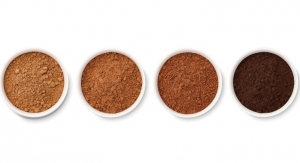02.11.13
Attention deficit hyperactivity disorder (ADHD) affects approximately two million American children, and this condition has grown to become the most commonly diagnosed behavioral disorder of childhood. The cause of ADHD is generally acknowledged to be multifactorial, involving both biological and environmental influence.
Nutritional deficiencies, including deficiencies in fatty acids (EPA, DHA), the amino acid methionine, and the trace minerals zinc and selenium, have been shown to influence neuronal function and produce defects in neuronal plasticity, as well as impact behavior in children with attention deficit hyperactivity disorder. These nutritional disturbances or variations from reference values have been associated with behavior typical of ADHD.
An investigation was undertaken to determine the reference values of specific biochemical markers that have been associated with behavior typical of ADHD in a group of patients before and after metabolic correction.
The study was based on data extracted from the Wichita-based Riordan Clinic's patient history database covering a period of over ten years. Researchers performed laboratory tests in 116 patients 2.7-25 years old with a diagnosis of ADHD, and compared the distributions of fatty acids, essential metals, and the levels of metabolic stress factors with established reference ranges before and after interventions. In addition, the association between toxic metal concentrations and the levels of essential metals in these patients was analyzed.
Treatment of ADHD patients was performed according to principles of integrative management of this condition, and patients were treated by essential fatty acids, amino acids, minerals, probiotics and vitamins.
“According to our data, the metabolic correction of ADHD by supplementation can ameliorate ADHD symptoms. Eighty percent (80%) of children who were treated from several weeks to 1-2 years, demonstrated improvement of metabolic stress level, measured by pyrrole test. For these patients, the levels of EPA were increased and the omega-6/omega-3 ratio was improved,” stated Dr. Nina Mikirova, director of research at the Riordan Clinic.
Putting all data together, it was demonstrated that after consumption of a combination of fatty acids as well as magnesium and zinc, amino acids, vitamins and probiotics, most subjects had a considerable reduction in markers of metabolic stress and reported less emotional problems.
Further studies need to be conducted with integrative metabolic correction therapy to determine its value in the management of ADHD.
This research, conducted by Riordan Clinic scientists Mikirova NA, Rogers AM, Taylor PR, Hunninghake RE, in collaboration with scientists from the School of Public Health, Medical Sciences Campus of the University of Puerto Rico, Miranda-Massari JR, and Gonzalez MJ, has recently been published in the Journal ofFunctional Foods in Health and Disease as “Metabolic correction for attention deficit/hyperactivity disorder: A biochemical-physiological therapeutic approach.”
Nutritional deficiencies, including deficiencies in fatty acids (EPA, DHA), the amino acid methionine, and the trace minerals zinc and selenium, have been shown to influence neuronal function and produce defects in neuronal plasticity, as well as impact behavior in children with attention deficit hyperactivity disorder. These nutritional disturbances or variations from reference values have been associated with behavior typical of ADHD.
An investigation was undertaken to determine the reference values of specific biochemical markers that have been associated with behavior typical of ADHD in a group of patients before and after metabolic correction.
The study was based on data extracted from the Wichita-based Riordan Clinic's patient history database covering a period of over ten years. Researchers performed laboratory tests in 116 patients 2.7-25 years old with a diagnosis of ADHD, and compared the distributions of fatty acids, essential metals, and the levels of metabolic stress factors with established reference ranges before and after interventions. In addition, the association between toxic metal concentrations and the levels of essential metals in these patients was analyzed.
Treatment of ADHD patients was performed according to principles of integrative management of this condition, and patients were treated by essential fatty acids, amino acids, minerals, probiotics and vitamins.
“According to our data, the metabolic correction of ADHD by supplementation can ameliorate ADHD symptoms. Eighty percent (80%) of children who were treated from several weeks to 1-2 years, demonstrated improvement of metabolic stress level, measured by pyrrole test. For these patients, the levels of EPA were increased and the omega-6/omega-3 ratio was improved,” stated Dr. Nina Mikirova, director of research at the Riordan Clinic.
Putting all data together, it was demonstrated that after consumption of a combination of fatty acids as well as magnesium and zinc, amino acids, vitamins and probiotics, most subjects had a considerable reduction in markers of metabolic stress and reported less emotional problems.
Further studies need to be conducted with integrative metabolic correction therapy to determine its value in the management of ADHD.
This research, conducted by Riordan Clinic scientists Mikirova NA, Rogers AM, Taylor PR, Hunninghake RE, in collaboration with scientists from the School of Public Health, Medical Sciences Campus of the University of Puerto Rico, Miranda-Massari JR, and Gonzalez MJ, has recently been published in the Journal ofFunctional Foods in Health and Disease as “Metabolic correction for attention deficit/hyperactivity disorder: A biochemical-physiological therapeutic approach.”



























